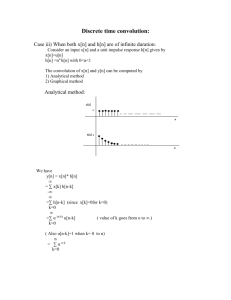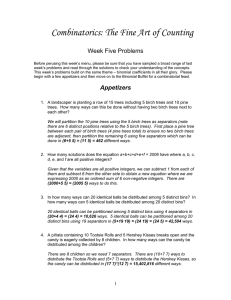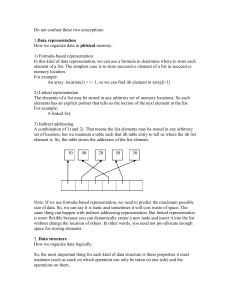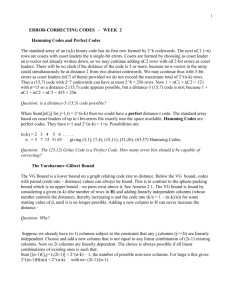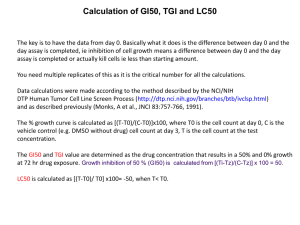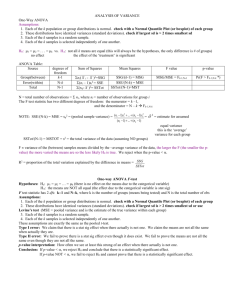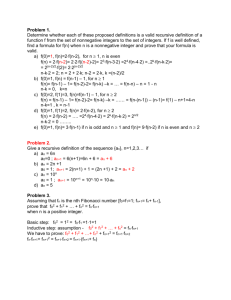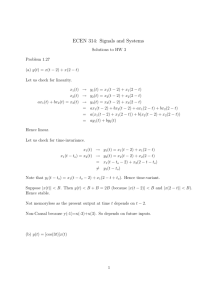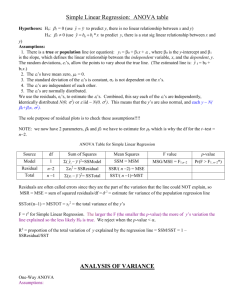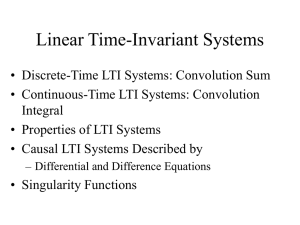08-SurajJungKarki
advertisement
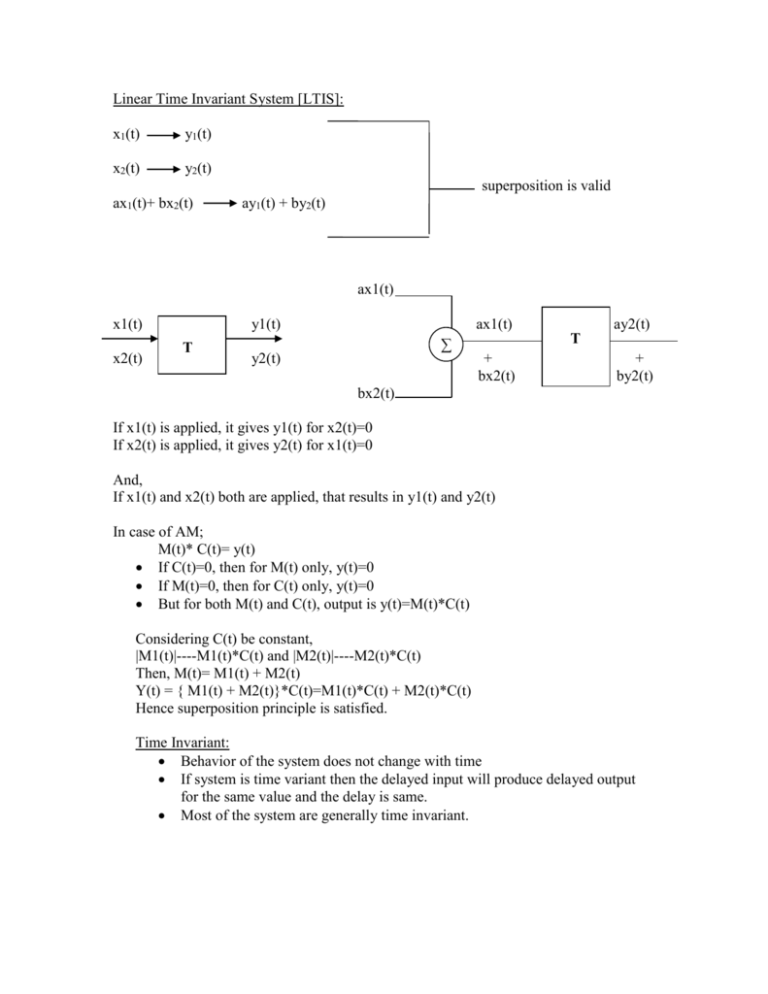
Linear Time Invariant System [LTIS]:
x1(t)
y1(t)
x2(t)
y2(t)
superposition is valid
ax1(t)+ bx2(t)
ay1(t) + by2(t)
ax1(t)
x1(t)
x2(t)
y1(t)
T
ax1(t)
∑
y2(t)
ay2(t)
T
+
bx2(t)
+
by2(t)
bx2(t)
If x1(t) is applied, it gives y1(t) for x2(t)=0
If x2(t) is applied, it gives y2(t) for x1(t)=0
And,
If x1(t) and x2(t) both are applied, that results in y1(t) and y2(t)
In case of AM;
M(t)* C(t)= y(t)
If C(t)=0, then for M(t) only, y(t)=0
If M(t)=0, then for C(t) only, y(t)=0
But for both M(t) and C(t), output is y(t)=M(t)*C(t)
Considering C(t) be constant,
|M1(t)|----M1(t)*C(t) and |M2(t)|----M2(t)*C(t)
Then, M(t)= M1(t) + M2(t)
Y(t) = { M1(t) + M2(t)}*C(t)=M1(t)*C(t) + M2(t)*C(t)
Hence superposition principle is satisfied.
Time Invariant:
Behavior of the system does not change with time
If system is time variant then the delayed input will produce delayed output
for the same value and the delay is same.
Most of the system are generally time invariant.
Eg.
If x(t)--------y(t)
x(t-t0)--------y(t-t0)
x(t)
x(t-t0)
Signal Property:
1. Continuous and Discrete Signals
CT:
x(t)---------analog
t------------continuous/analog
DT:
x[n]---------continuous
n-------------discrete
Digital:
x[n]----------discrete
n--------------discrete
2. Power and Energy Signals:
Power signal:
Energy is infinite, power is finite
P∞=finite, E∞=∞
Dealt with harmonics
Energy signal:
Power is infinite, energy is finite
E∞=∞, P∞=0
3. Periodic and Non-periodic:
Periodic:
x(t)=x(t+T) ; T=1,2,3,….
Every signal may have zero period or infinite period
Non-periodic:
Above condition not satisfied ie, x(t)≠x(t+T)
x[n]=x[n+kn]
ejωt
T=2П/ω
ej ωn ej ωn ej ωn
= *
ωN=2Пk
N=2Пk/ω
ej(ω+2П)t , then T=2П/(ω+2П)
4. Deterministic or Random:
Deterministic:
At any value of time, value of the system can be known
Random:
Value is uncertain at any value of time t
Speech is random signal
Any system is whether or not:
Causal
Stable
Linear
Memory
Invertible
Time invariant
Observable (internal description with view point of output)
Controllable (internal description with view point of input)
LTI System Analysis/Characteristics:
Linear and time invariant property is satisfied
CT
ax1 (t) +bx2 (t) ----------ay1 (t) +by2 (t)
x1(t-t0)---------y1(t-t0)
x2(t-t0)----------y2(t-t0)
DT
ax1 [n] + bx2 [n] -------ay1 [n] +by2 [n]
x1[n-n0]-------y1[n-n0]
x2[n+n0]------y2[n+n0]
Concept of linearity gives the decomposition of signals that allows to simplify the
complexity of signals.
In terms of Impulse: (δ and shifted δ)
DT system
δ[n+5]
δ[0]
δ[n-5]
-5
5
x[0]
x[n]
N
5
x[n]*δ[n-5]=x[5]*δ[n-5]
In general,
x[1] δ[n-1]
x[2] δ[n-2]
…..
….
…..
Hence,
x[n] = ……….+ x[-2]δ[n+2]+x[-1] δ[n+1]+x[0] δ[n]+x[1] δ[n-1]+……….
X[n]= ∑ x[k] δ[n-k]
δ[n]
system
h[n]
impulse response
Time invariant system:
δ[n-1]-------h[n-1]
δ[n-k]-------h[n-k]
y[n]= …….+ x[-2]h[n-2] + x[-1]h[n-1] + x[0]h[n] + x[1]h[n+1] + ……………
y[n]= ∑ x[k]h[n-k]
If system is LTI and its impulse response is known, we can obtain the output for
any kind of inputs.
Conversely, impulse response completely characterizes the LTI system.
y[n]= ∑ x[k]h[n-k] but how to compute????
We know,
y(t)=∫ x(*)ﺡh(t-(ﺡdﺡ
tietulor onilnrgetni
x[n]=x[k]
n
h[n]
h[-k]
k
k
h[n-k]
k
x[k]h[n-k]
Steps:
Write the system representation
Flip h[k]
Shift (delay) by ‘n’
Multiply x[k]h[n-k]
Add
Get y[n]
